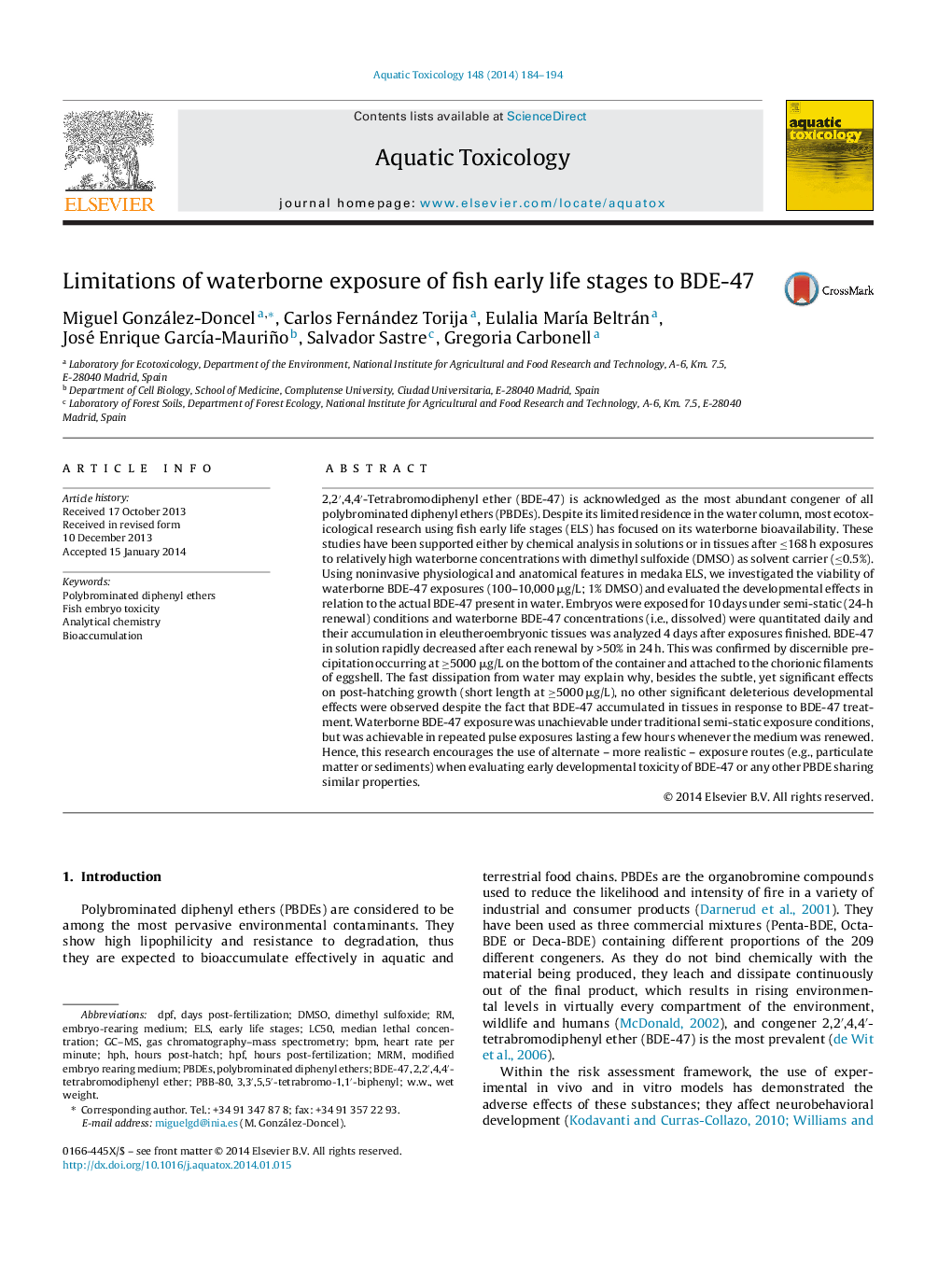| کد مقاله | کد نشریه | سال انتشار | مقاله انگلیسی | نسخه تمام متن |
|---|---|---|---|---|
| 4529387 | 1625957 | 2014 | 11 صفحه PDF | دانلود رایگان |

• Pre- and post-hatch effects from medaka embryo waterborne exposure to BDE-47.
• Except for eleutheroembryonic length (≥5000 μg/L), no other effects were seen.
• BDE-47 dissipated quickly from solution (half-life 3.1 h) in the form of crystals.
• Previously depurated eleutheroembryos accumulated BDE-47 in a dose–response manner.
• Waterborne exposure unachievable under traditional semi-static exposure conditions.
2,2′,4,4′-Tetrabromodiphenyl ether (BDE-47) is acknowledged as the most abundant congener of all polybrominated diphenyl ethers (PBDEs). Despite its limited residence in the water column, most ecotoxicological research using fish early life stages (ELS) has focused on its waterborne bioavailability. These studies have been supported either by chemical analysis in solutions or in tissues after ≤168 h exposures to relatively high waterborne concentrations with dimethyl sulfoxide (DMSO) as solvent carrier (≤0.5%). Using noninvasive physiological and anatomical features in medaka ELS, we investigated the viability of waterborne BDE-47 exposures (100–10,000 μg/L; 1% DMSO) and evaluated the developmental effects in relation to the actual BDE-47 present in water. Embryos were exposed for 10 days under semi-static (24-h renewal) conditions and waterborne BDE-47 concentrations (i.e., dissolved) were quantitated daily and their accumulation in eleutheroembryonic tissues was analyzed 4 days after exposures finished. BDE-47 in solution rapidly decreased after each renewal by >50% in 24 h. This was confirmed by discernible precipitation occurring at ≥5000 μg/L on the bottom of the container and attached to the chorionic filaments of eggshell. The fast dissipation from water may explain why, besides the subtle, yet significant effects on post-hatching growth (short length at ≥5000 μg/L), no other significant deleterious developmental effects were observed despite the fact that BDE-47 accumulated in tissues in response to BDE-47 treatment. Waterborne BDE-47 exposure was unachievable under traditional semi-static exposure conditions, but was achievable in repeated pulse exposures lasting a few hours whenever the medium was renewed. Hence, this research encourages the use of alternate – more realistic – exposure routes (e.g., particulate matter or sediments) when evaluating early developmental toxicity of BDE-47 or any other PBDE sharing similar properties.
Journal: Aquatic Toxicology - Volume 148, March 2014, Pages 184–194